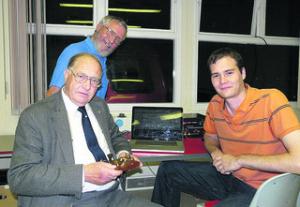The team of operators for the initial two weeks are now on the Island and started erecting antennas and building stations this morning. Operations should start in the late evening of 30 September local time.
Initially the antennas will be, vertical dipole arrays for 10m, 12m, 15m, 17m and 20m. Ground planes with elevated radials for 30m and 40m, plus a quarter wave ground plane with ground radials for 80m and a 18m tall T antenna with ground radials for 160m. There will NE & NW beverages for 160m & 80m plus a K9AY for 160m. All antennas are within a few meters of the ocean on beach running East/West. Other antennas will be added as they gain experience in propagation patterns from T32.
UPDATE:
Antenna erection is complete, final work is under way on building the stations, IT infrastructure and interoperability testing. The plan is to be QRV by 10:00 GMT on 1st October.

 I have just found out that it is possible to get RadCom as a PDF from the RSGB website. You can download the entire magazine in a single PDF (or smaller articles individually) from
I have just found out that it is possible to get RadCom as a PDF from the RSGB website. You can download the entire magazine in a single PDF (or smaller articles individually) from